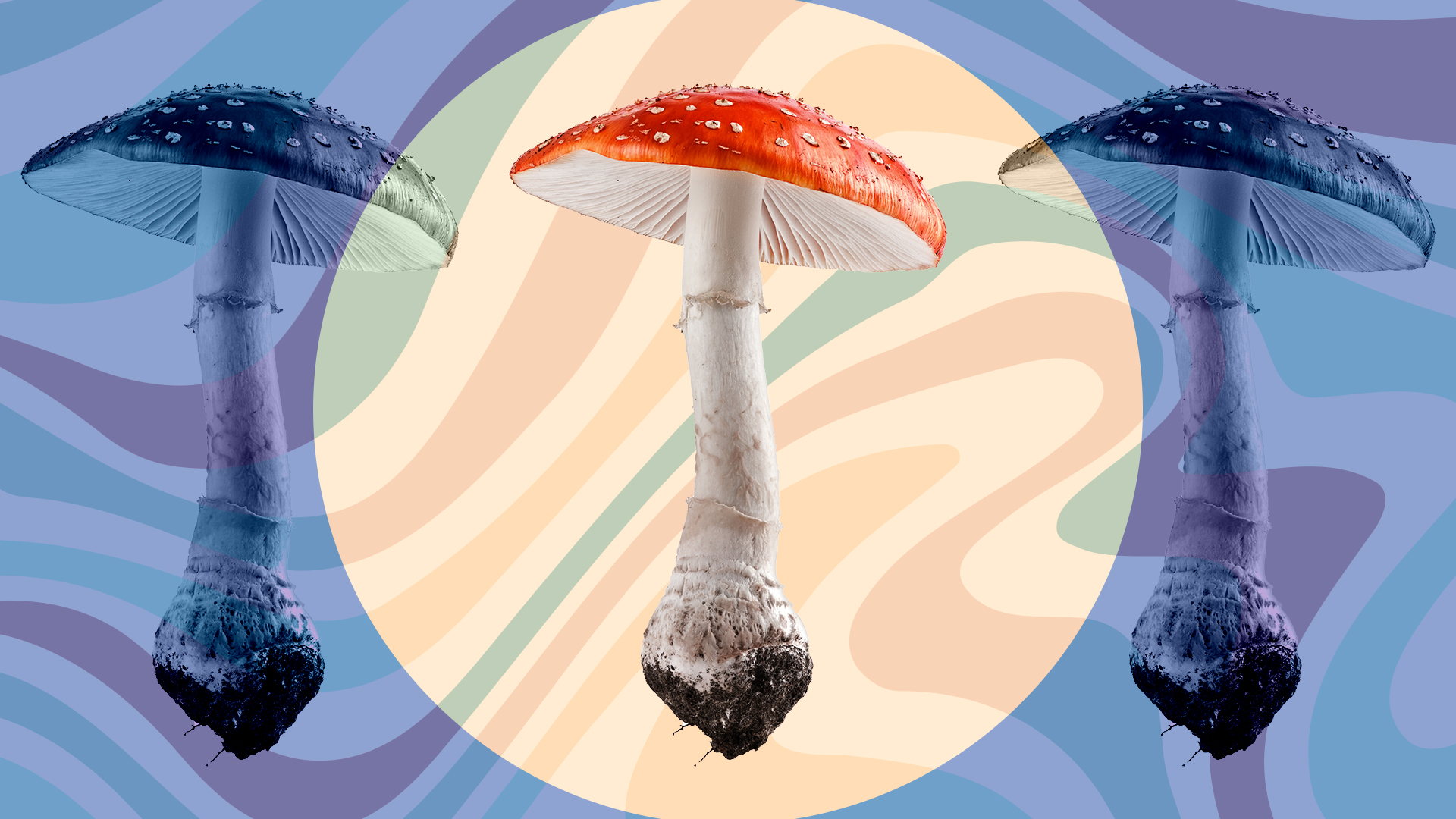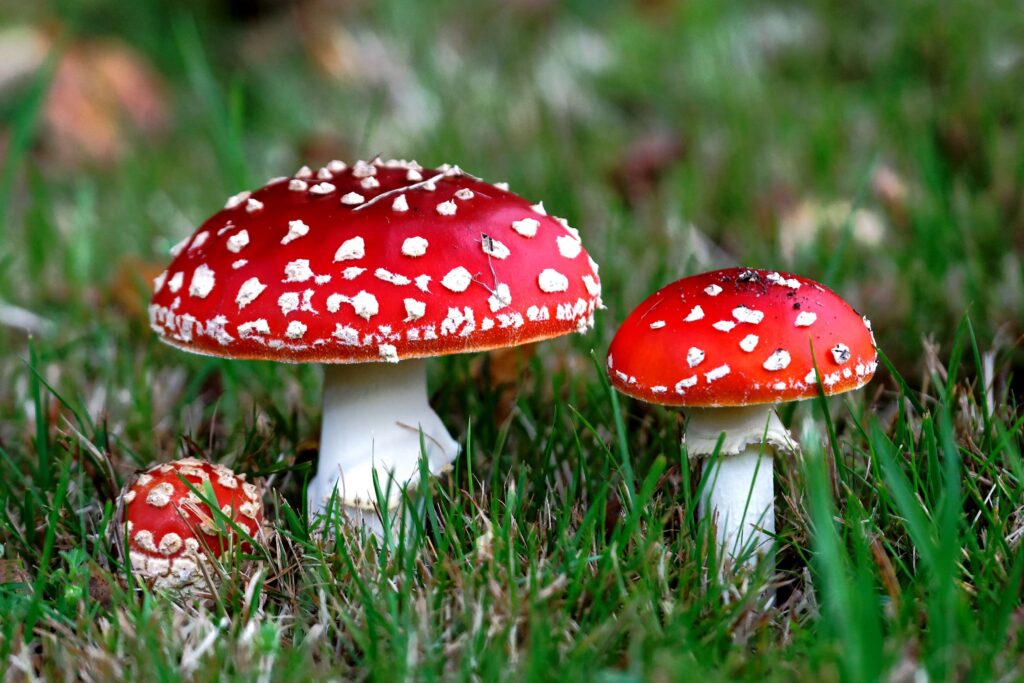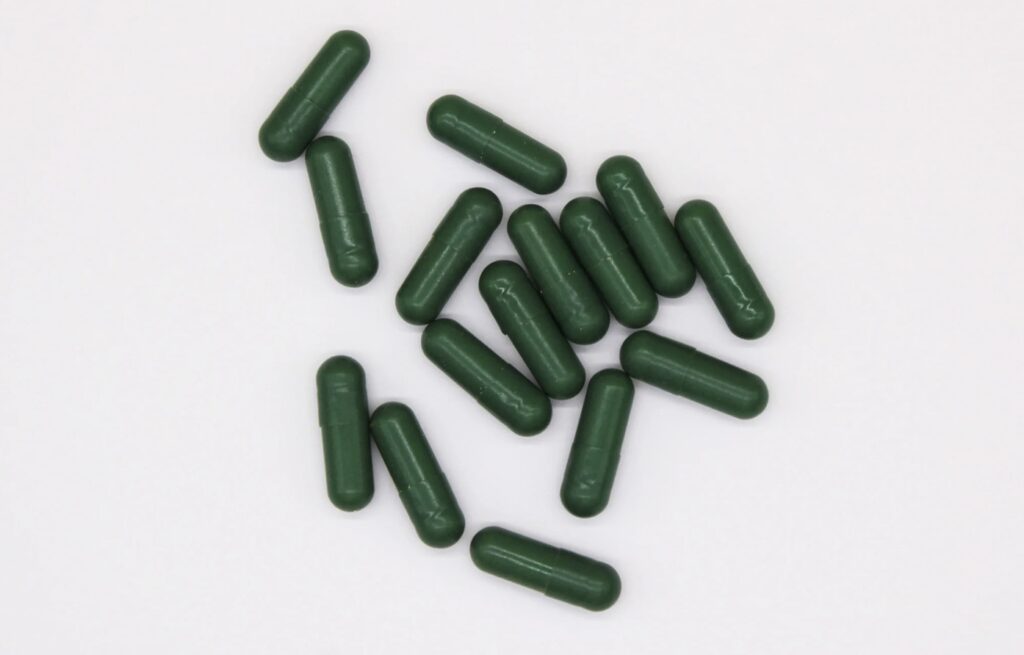
Meet Amanita Muscaria, the legal mind-altering mushroom available in Florida (and online).
Editor’s note: Do not ingest untreated Amanita muscaria (fly agaric) mushrooms. They are considered toxic to humans in their raw state.
As cities and states vote at a rapid pace to decriminalize entheogens, the vast majority of Americans still do not have access to legal psychoactive mushrooms.
Recently, however, a novel market has emerged to saturate consumers with a product that remains legal — for now — at the federal level.
The mushroom species Amanita muscaria — also known as fly agaric — contains the psychoactive compound muscimol (pronounced “musk-a-mall”) and traces of another compound called muscarine. But because it doesn’t contain psilocybin, it’s outside of state and federal laws that otherwise criminalize magic mushrooms.
Experts and traders are seeing a growing interest in Amanita muscaria. Earlier this month, Tampa, Fla.-based hemp retailer Chillum became the first brick-and-mortar store to offer — at least publicly — a line of Amanita muscaria capsules, gummies, and edibles.
Related
Do Magic Mushrooms Have “Strains” Like Cannabis?
Legal because psilocybin is missing
“For whatever reason, Amanita are not illegal. Many people use Amanita for microdosing and have entheogenic experiences at higher doses,” noted mycologist William Padilla-Brown told Leafly.
Read on to learn more about the mushroom’s fascinating history, safe dosage, how it differs from psilocybin, and its effects.
A visually striking mushroom

Amanita muscaria typically grows in coniferous forests, most commonly in Lithuania and Siberia. It’s bright red and bears an uncanny resemblance to the legendary Mario Brothers mushroom, making it hard to miss.
While a commercial market for Amanita muscaria has only recently emerged, the species has a long history of religious and spiritual use, particularly among indigenous peoples—including the Saami—in modern-day Scandinavia.
In fact, some experts claim that Amanita Muscaria played a role in the development of Christmas.
is that you santa claus
“Shamans collected these mushrooms and dried them in their huts. As the season of food shortages approached, they traveled around offering this psychedelic concoction as a gift,” James McConchie told Leafly. McConchie is an educator and advocate, owner of the Haight Street Shroom Shop in San Francisco and co-founder of Decrim SF.
These shamans, McConchie said, may have served as a model for the image of Santa Claus.
Padilla-Brown further noted that early consumers would dry their mushrooms on trees – much like ornaments on a Christmas tree – and would wear red and white in a nod to the mushrooms.
However, there was a complication that early consumers had to deal with: Amanita muscaria is poisonous. Consuming it without proper cooking and drying first can lead to muscle failure and even death, although few deaths have occurred since the advent of modern medicine.
Related
How to search for magic mushrooms
Of course I would drink that…
Luckily, indigenous consumers in Siberia have found a remarkable way to detoxify the mushrooms. They fed the amanita to reindeer, which in turn would break down the fruit and then excrete hallucinogenic, muscimol-rich urine, which they drank.
According to an 18th-century account, individuals could “recycle” the mushrooms up to five times by drinking their own urine. Good Appetite.
Interaction with different brain receptors
Although amanita bears a close resemblance to magic mushrooms, experts emphasize the differences between them, both in terms of their chemical composition and their psychoactive effects.
Amanita contains the psychoactive compounds muscimol and muscarine, as well as ibotenic acid, which is converted to muscimol during both the drying process and digestion.
Padilla-Brown, the mycologist, pointed out that “Muscimol and all the compounds attributed to the intoxicating effects of Amanita muscaria do not act on the same receptors as classical psychedelics.”
While psilocybin interacts with serotonin receptors, muscimol is taken up by GABA receptors, which also interact with barbiturates and benzodiazepines.
More chill effects, less hallucinatory effects
Experts claim that amanita tends to produce less hallucinatory effects than psilocybin and psilocin found in other entheogenic mushrooms.
“[Amanita muscaria] Chill out,” said McConchie, who further compared its effects to ketamine. “At low concentrations, it’s not a narcotic per se, but it’s a bit like an anesthetic. Higher doses may cause drowsiness or lightheadedness.”
McConchie added that Amanita Muscaria can serve as a “really powerful remedy for people dealing with anxiety, depression and PTSD. Sometimes psychedelic experiences scare them a bit.”
Drew Gennuso is CEO of Psilo Mart, a popular online retailer whose products also stock the shelves at Chillum in Tampa. He compared the effects of Amanita Muscaria to an indica cannabis strain.
“It will create a very nice body feeling. You don’t usually get any visuals [with smaller doses]’ he told Leafly.
The dosage is quite different than psilocybin

Gennuso found that Amanita Muscaria is less potent than regular psilocybin. Each microdose capsule and gummy contains 350 milligrams of Amanita extract.
“We’re trying to formulate this to be roughly equivalent to the effect of 100 mg of psilocybin,” Gennuso said. “Right now it’s something like the rough idea of a microdose.”
Other sources recommend a much lower dose of around 10 milligrams. But that number is for pure muscimol, as opposed to the mushroom extract found in consumer-oriented capsules.
It’s legal for now
A number of experts compared the legal status of Amanita to that of delta-8-THC, the pseudo-legal analogue of hemp-derived THC. Both offer a loophole of sorts in terms of prohibition, and both can be shipped across the country (although some states have banned delta-8-THC).
Gennuso, who formerly founded hemp-derived cannabinoid marketplace CBD Hemp Direct, believes his company’s emphasis on lab testing and explicit language about appropriate dosing could ward off new laws banning Amanita.
“Coming from the hemp landscape, you have to be sensitive to that,” he told Leafly.
“Eventually there will be bad actors who don’t want to spend money to get COAs [Certificate of Analysis] or check their suppliers. This is usually what invites possible regulation. We are prepared for that. We’re thinking about that,” he added.
For example, McConchie emphasized the importance of harvesting Amanita responsibly. “We cannot cultivate them,” he stressed. “Cut and cut your butt, don’t mushroom yourselves. Leave the mycelium connection so more mushrooms can grow,” he advised.
Therefore, the future of Amanita muscaria – its legality, its availability – is far from certain.
Max Savage Levenson
Max Savage Levenson probably has the lowest cannabis tolerance of any author on the cannabis beat. He also writes about music for Pitchfork, Bandcamp and other bespectacled people. He is the co-host of the Hash podcast. His dream interview is Tyler the Creator.
Check out Max Savage Levenson’s articles
The latest in varieties and products
show everything
By submitting this form, you are subscribing to Leafly news and promotional emails and agreeing to Leafly’s Terms of Service and Privacy Policy. You can unsubscribe from Leafly email communications at any time.

Post a comment: